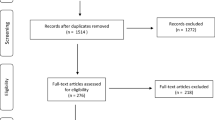Summary
In order to evaluate autonomie regulation in Parkinson's disease, the heart-rate responses to passive head-up tilt and the spectral analysis of spontaneous heart rate variability in supine position were studied in 18 young (30.8 ± 1.38 years old) and 13 aged (61.9 ± 1.61 years) healthy controls and 13 patients with Parkinson's disease (62.9 ± 1.55 years). Patients were evaluated in the University Hospital of the Canary Islands by a neurologist and a specialist in rehabilitation. Finally, a computerized procedure developed in the Dept. of Physiology of La Laguna University was used to quantify the autonomie regulation of heart-rate (HR) variability. In relation to the younger group, elderly controls showed a reduction in the amplitude and no differences in the latency of the three successive peaks of HR response to tilt. In relation to the elderly matched controls, the Parkinson group showed a slight decrease for the second response amplitude and no differences for both the first or third response amplitude and the latency of the three responses. In the frequency domain analysis of the spontaneous HR oscillation in supine position recording, the elderly and Parkinson groups showed a decrease in the power spectrum for low frequency (< 0.04 Hz; thermoregulation related band), mid frequency (0.04–0.15 Hz; related to sympathetic activity in response to baroreceptors stimulation) and high frequency (0.15–0.4 Hz; related to sympathovagal tonus activated by respiratory movements). In relation to elderly controls, the Parkinson group showed lower power in the three spectral bands studied. Present data support the hypothesis that both sympathetic and parasympathetic control of heart activity are impaired in Parkinson's disease and that this dysfunction can be assessed by combining time-domain and frequency-domain analysis of HR changes.
Similar content being viewed by others
References
Appenzeller O, Goss JE (1974) Autonomie deficits in Parkinson's syndrome. Arch Neurol 24: 50–57
Bannister R (1988) Clinical features of autonomie failure. In: Bannister R (ed) Autonomic failure. Oxford University Press, New York, pp 267–228
Bannister R, Mathias CJ (1988) Clinical features and investigation of the primary autonomie failure syndromes. In: Bannister R (ed) Autonomic failure. Oxford University Press, New York, pp 531–547
Charcot JM (1982) Maladies du système nerveux, vol 1. Bataille, Paris
Ewing DJ (1993) Analysis of HR variability and other non-invasive tests with special reference to diabetes mellitus. In: Bannister R (ed) Autonomie failure. Oxford University Press, New York, pp 312–333
Fichefet JP, Sternon JE, Franken L, Dermanet JC, Vanderhaeghen J (1965) Étude anatomo-clinique d'un cas d'hypotension orthostatique “idiopathique”. Acta Cardiol 20: 332–348
Gibb WRG (1988) The Lewy body and autonomie failure. In: Bannister R (ed) Autonomie failure. Oxford University Press, New York, pp 484–497
Gross M, Bannister R, Goodwin-Ansten R (1972) Orthostatic hypotension in Parkinson's disease. Lancet 1: 174–176
Goetz CG, Lutge W, Tanner CM (1986) Autonomie dysfunction in Parkinson's disease. Neurology 36: 73–75
Kono C, Matsubara M, Inagaki T (1976) Idiopathic orthostatic hypotension with numerous Lewy bodies in the sympathetic ganglia. Report of a case. Neurol Med 4: 168–170
Mathias CJ, Bannister R (1993) Investigation of autonomie disorders. In: Bannister R, Mathias CJ (eds) Autonomie failure. Oxford University Press, Oxford, pp 255–291
Malliani A, Pagani M, Lombardi F, Cerutti S (1991) Cardiovascular neural regulation explored in the frequency domain. Circulation 84: 482–492
Mozi M, Ebert TJ (1993) Quantification of HR variability with power spectral analysis. Curr Opin Anestesiol 6: 3–17
Oppenheimer DR (1980) Lateral horn cells in progressive autonomie failure. J Neurol Sci 46: 393–404
Parkinson J (1817) An assay on the shaking palsy. Whittingham and Rowland, London
Pomeranz B, Macaulay RJB, Caudill MA, Kutz I, Adam D, Gordon D, Kilborn KM, Barger AC, Shannon DC, Cohen RJ, Benson H (1985) Assessment of autonomie function in humans by HR spectral analysis. Am J Physiol 248: H151-H153
Rajput AH, Rozdilsky B (1976) Dysautonomia in Parkinsonism: a clinicopathological study. J Neurol Neurosurg Psychiatry 39: 1092–1100
Ryan SM, Goldberger AL, Ruthazer R, Mietus J, Lipsitz LA (1992) Spectral analysis of HR dynamics in elderly persons with postprandial hypotension. Am J Cardiol 69: 201–205
Turkka J (1986) Autonomie dysfunction in Parkinson's disease. Acta Universitatis Ouluensis D142: 15–66
Wieling W (1993) Non-invasive continuous recording of HR and blood pressure in the evaluation of neurocardiovascular control. In: Bannister R, Mathias CJ (eds) Autonomic failure. Oxford University Press, Oxford, pp 291–311
Author information
Authors and Affiliations
Rights and permissions
About this article
Cite this article
Rodríguez, M., Sabaté, M. & Troncoso, E. Time and frequency domain analysis for the assessment of heart autonomie control in Parkinson's disease. J. Neural Transmission 103, 447–454 (1996). https://doi.org/10.1007/BF01276420
Received:
Accepted:
Issue Date:
DOI: https://doi.org/10.1007/BF01276420




